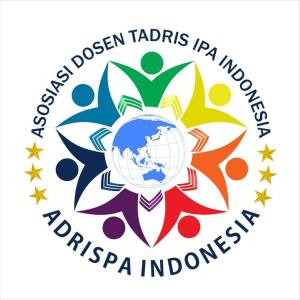APPLICATION OF INQUIRY BASED LEARNING MODEL USING STEM APPROACH TO REDUCE STUDENTS' INTRINSIC COGNITIVE LOAD
DOI:
https://doi.org/10.21154/insecta.v2i1.2482Keywords:
Cognitive Load, Intrinsic Cognitive Load (ICL), STEMAbstract
This study is an experimental research using a quasi-experimental design with the type of non-equivalent control group pretest-posttest. This research aims to reduce Intrinsic Cognitive Load (ICL) through Inquiry Based Learning (IBL) model based STEM approach. This research was conducted at SMA Negeri 1 Seputih Banyak with the research subjects of class X IPA 1 students and X IPA 4. An data Intrinsic Cognitive Load obtained from essay the pretest-posttest (Task Complexity worksheet). Cognitive load test data analysis was performed using the data normality test, N-gain test and hypothesis test using the Paired Sample T-Test. The experimental class implements the Inquiry Based Learning model based audio and visual using STEM approach while the control class is nonaudio and visual. The results showed by the average value of N-Gain Intrinsic Cognitive Load (ICL) in the experimental class was 0.63 with the moderate category and the control class was 0.18 with the low category. Based on data analysis, can be concluded that there is a positive influence in the form of a decrease in the cognitive load Intrinsic Cognitive Load (ICL) in the experimental class using the Inquiry Based Learning model plus an audio and visual based STEM approach.References
Anggraeni, Ningsih. (2018). Students’ Perception Of “Full-Day School” On The Result of Learning Geography IPS Class XI of Senior High School in the State 5 District Of Luwu. LA Geografia 17(4).
Baharun, H., & Alawiyah, S. (2018). Pendidikan Full Day School dalam Perspektif EpSTEMologi Muhammad ”˜Abid Al-Jabiri. Jurnal Kependidikan Islam, 4(1), 1-22.
Collins, J. (2002). Teaching and Learning with Multimedia. Routledge. doi:10.4324/9780203441305.
Freeman, S., Eddy, S. L., McDonough, M., Smith, M. K., Okoroafor, N., Jordt, H., & Wenderoth, M. P. (2014). Active Learning Increases Student Performance In Science. Proceedings Of The National Academy Of Science Of The United States Of America, 111 (23), 8410-8415.
Ganarsih, T., Hidayat, T., Rahmat, A. (2015). Menurunkan beban kognitif intrinsic siswa MA dalam pembelajaran klasifikasi spermatophyte menggunakan tayangan video keanekaragaman tumbuhan. In seminar nasional XII pendidikan biologi UNS.
Mayer, R. E., & Moreno, R. (2003). Nine ways to reduce cognitive load in multimedia learning. Educational Psychologist, 38, 43-52.
Muthi’ik, I.I., Abdurrahman, A., & Rosidin, U. (2018). The Effectiveness Of Applying STEM Approach To Self-Efficacy And Student Learning Outcomes For Teaching Newton’s Law. Jurnal Penelitaian & Pengembangan Pendidikan Fisika, 4(1), 11-18.
Savignon, Sandra J. (2007). Beyond Communicated Language Teaching. Journal of Fragmatics 39 (1): 207-220.
Stholman, M., Moore, T. J., & Roehrig, G.H. (2012). Considerations For Teaching Integrated STEM Education. Journal Of Pre-College Engineering Education Research (J-PEER), 2 (1), 4-11.
Sweller, J., Ayres, P. & Kalyuga, S. (2011) Cognitive Load Theory. New York.. Springer- Verlag: Department Education.
Sweller, J., Merrienboer, J., & Paas, F. (1998). Cognitive Architecture and Instructional Design. Educational Psychology Review, 10(3), 251-296.
Wenning, C. J.(2011). The levels of inquiry model of science teaching. Journal of Physics Teacher Education Online, 6(2), 9-16.








